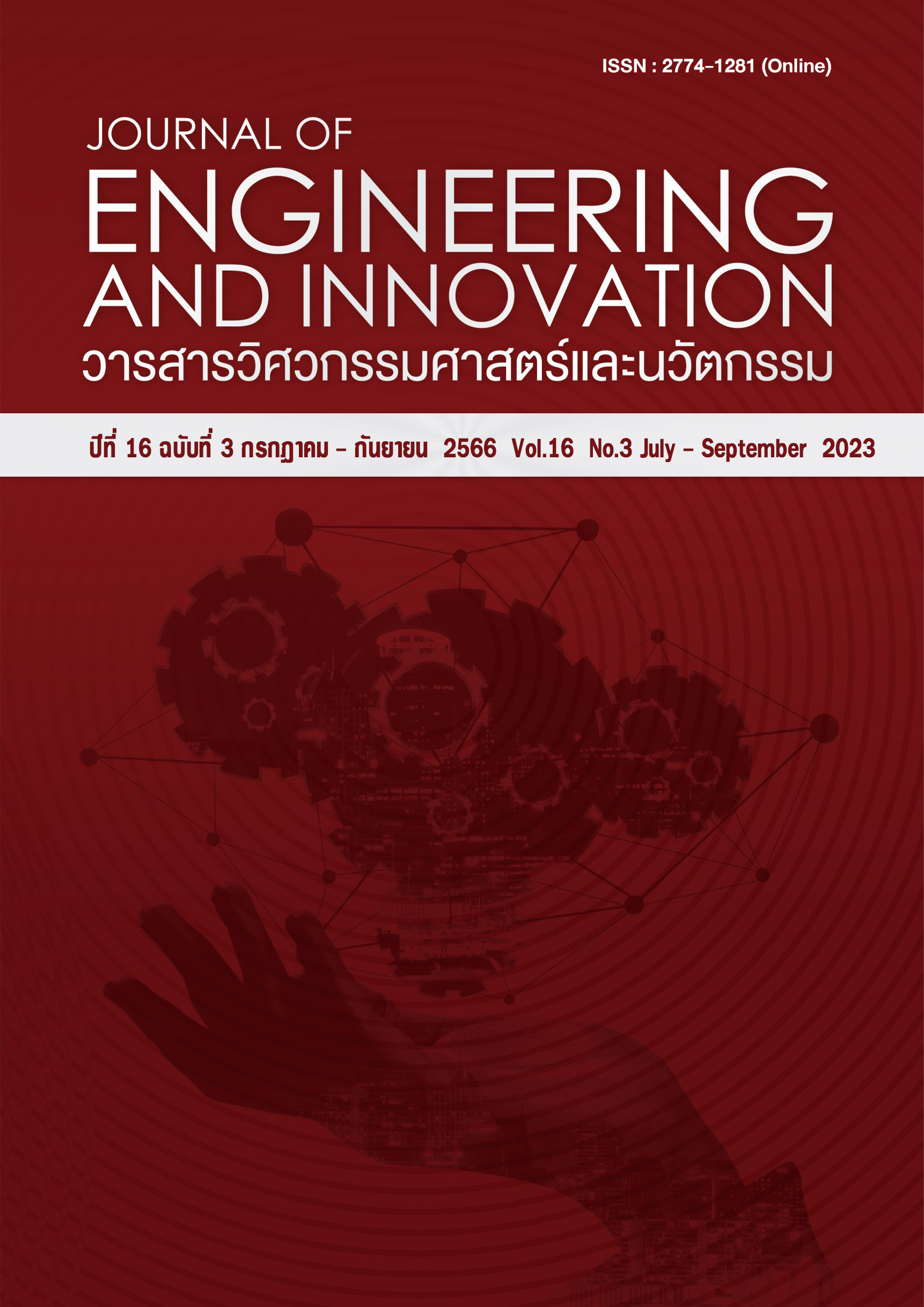The study of agricultural products distribution in Tak province via Distribution Centers (DCs)
Main Article Content
Abstract
This research aimed to study the suitability of agricultural product transportation in Tak Province by distribution centers (DCs). For the research implementation, the researchers studied the data of agricultural products in Tak Province. Then, we developed a mathematical model to solve the agricultural product transportation problem for the minimum transportation expenses. This was considered together with truck sizes by using 3 transportation models, i.e, Model 1: The regular direct transportation from origins to destinations, Model 2: Transportation by DCs, and Model 3: Transportation by DCs and direct transportation. The researcher collected the data of agricultural products from Tak Provincial Agricultural extension Office for 4 years between 2017 – 2020, and designed the samples of 2 datasets for testing the results of changeable answers when product volumes and consumer demands changed. Next, the mathematical models were revised together with the data of the datasets by AMPL. GUROBI was used as a problem-solving tool and a valid method. After that, the results were brought for expense analysis. It was found that Model 3: Transportation by DCs and direct transportation generated minimum transportation cost.
Article Details
References
Tak Provincial Agriculture and Cooperatives Office, “products and farmland 2017-2020,” (In thai)
Somrub, C. (2014). “A study of distribution models to reduce logistics costs: A Case Study X.X.X Company,” M.S. thesis, Dept. Logis. BBA., Univ. of the Thai Chamber of Commerce, Bangkok, Thailand.
Wiriyasahakij, T. (2015). “Transportation Cost Reduction Study Applying Milk Run Delivery,” M.S. thesis, Dept. Logis. Sc., Burapha Univ., Chonburi, Thailand.
Minh, N. D., Kien D. T., and Hau, P. K. (2020). “Applying Milk-run Method to Optimize Cost of Transport: an Empirical Evidence,” International Journal of Supply and Operations Management, vol. 7, no.2, pp. 178-188.
Meyer, A. (2017). Milk Run Design: Definitions, Concepts and Solution Approaches, 1th ed. Germany: KIT Scientific Publishing,
Mavi, R. K., Goh, N., Mavi, K., Jie, F., Brown, K., Biermann, S., and Khanfar, A. A. (2020). “Cross-Docking: A Systematic Literature Review,” Sustainability Journal, vol. 12, no. 4789, pp. 1-19,
Vogt, J. (2010). “The Successful Cross-Dock Based Supply Chain,” Journal of Business Logistic, vol. 31, no. 1, pp. 99-119.
Wongwilas, Y. (2014). “Location Selection Analysis for Distribution Center: A Case Study Delivery and Distribution of Consumer Products,” M.S. thesis, Dept. Logis. Sc., Burapha Univ., Chonburi, Thailand,
Kittitavornkul, K., and Pimsakul, S. (2012). “Scheduling of Inbound and Outbound Trucks in Retail Cross Docking Distribution Center by Heuristic Methods,” KMUTT Research and Development Journal, vol. 35, no. 2, pp. 219-233.
Gunawan, A., Widjaja, A. T., Gan, B., Yu, V. F., and Jodiawan, P. (2020). “Vehicle routing problem for multi-product cross-docking,” in Proceedings of the International Conference on Industrial Engineering and Operations Management, Dubai, UAE, March 10-12.
Issi, G. C., Linfati, R., and Escoabr, J. W. (2020). “Mathematical Optimization Model for Truck Scheduling in a Distribution Center with a Mixed Service-Mode Dock Area,” Journal of Advanced Transportation, vol. 2020, pp.1-13.
Tapanyo, K., & Wisittipanich, W. (2021). Development of a mathematical model scheduling of inbound and outbound trucks for cross-docking. Journal of Engineering and Innovation, 15(1), 102-112.
Lekhavat, S., & Chhun, S. (2022). Multi-commodity supply chain network design problem considering production cost and inventory holding cost. Journal of Engineering and Innovation, 15(2), 11-24.
Ransikarbum, K., & Mason, S. J. (2021). A bi-objective optimisation of post-disaster relief distribution and short-term network restoration using hybrid NSGA-II algorithm. International Journal of Production Research, 1-25.
Wattanasaeng, N., & Ransikarbum, K. (2021). Model and analysis of economic-and risk-based objective optimization problem for plant location within industrial estates using epsilon-constraint algorithms. Computation, 9(4), 46.
Trailer industry company. Available online 17 March 2021. http://trailer-industry.com/

